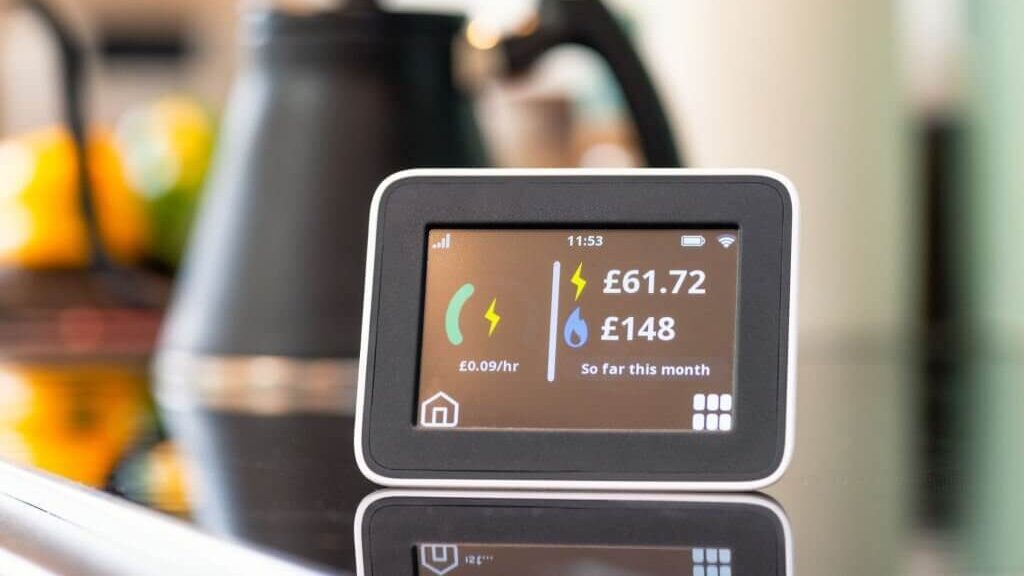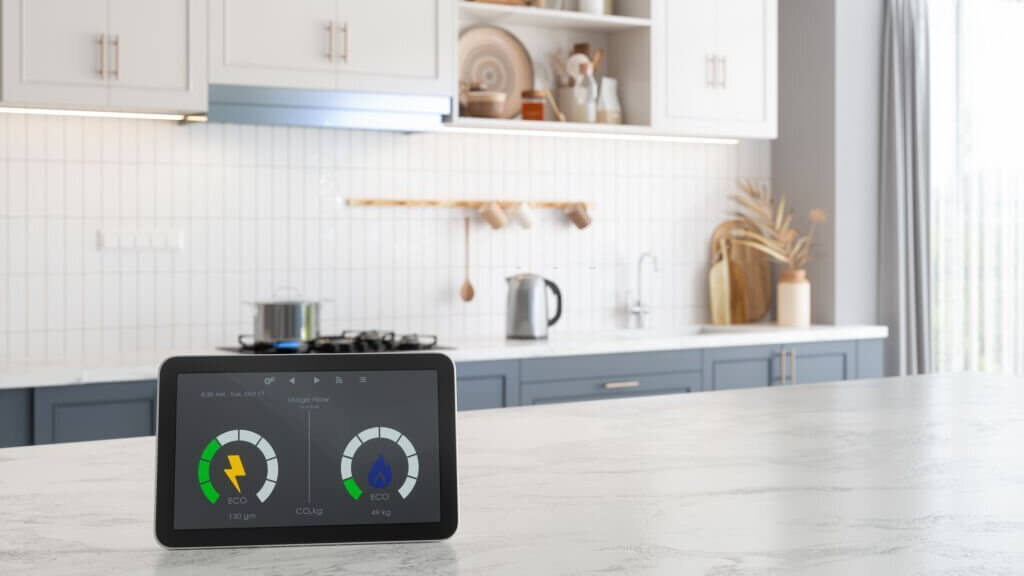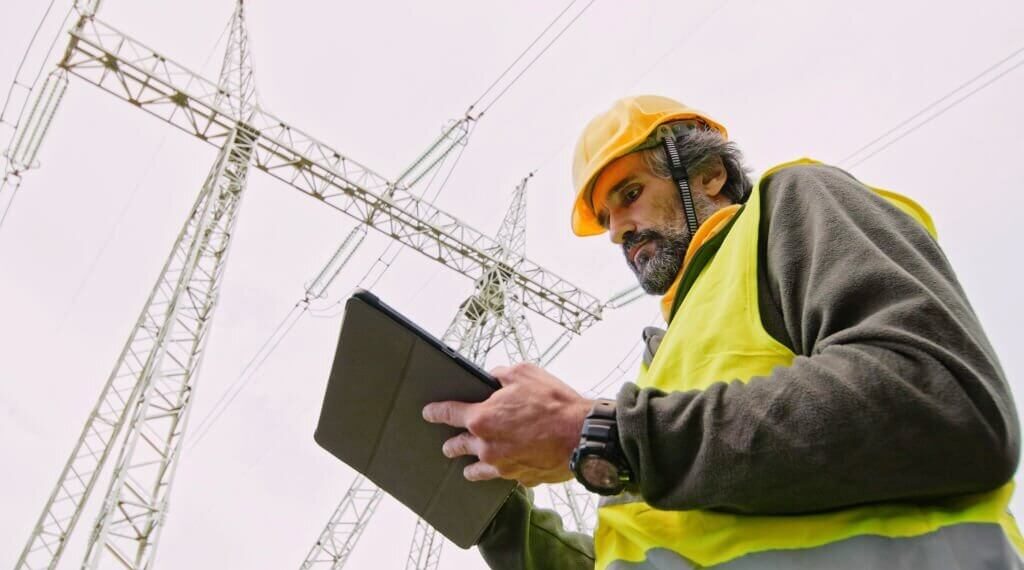What is a Smart Meter?
Smart Meters are the newer way to measure your gas and electricity consumption. But unlike the old gas and electricity meters, smart meters consist of some more accurate approaches.
The Government in the U.K. has already targeted to install a smart meter in all homes by 2020.Smart Meters measure energy consumption like the regular meter.
But instead of showing in an analog state, the energy consumption is displayed on a digital screen. Smart meters measure the energy consumption throughout the day and wirelessly send the data to your energy supplier.

Smart Meters saves from the headache of manual readings. The automated readings are sent directly to your energy supplier through a secure channel. Thus, your bills won’t appear at the estimated rate.
Instead, it takes the accurate measurement of energy you have consumed, and you pay exactly for the amount of gas or electricity you have used.
What Does A Smart Meter Look Like?
A Smart Meter appears to be similar in size or shape to your regular meter. However, it’s the features or the display method that makes it different from a standard meter.
A smart meter may vary in design depending on the energy company which manufactures it. A smart meter features a display screen that mentions energy consumption in digital form.
The display screen won’t consume much power nor affect your electricity bill. You may find one or more buttons on the front panel of a smart meter, which allows you to cycle through different display screens showing readings.
These electronics of intelligent meters are protected under glass to withstand any exterior conditions such as harsh weather. However, different generations of smart meters (SMETS1 and SMETS2) may look identical in terms of features.
In-Home Display (IHD)
The new in-home displays are a supported, convenient piece of equipment with the latest smart meters. The in-home display shows how much energy you have consumed, mentioning the kWh unit.
This suitable wireless display unit also mentions the costs or bills produced due to the usage. The in-home display is connected to your smart gas and electricity meters wirelessly. The data is transferred from the smart meters on this wireless display unit.
If you use more electricity, you will observe a surge in your smart in-home display unit readings. Consumers’ idea about their energy consumption in real-time encourages them to save energy by using less electricity or gas.
Many consumers may mistake the in-home display unit for the smart meter due to its reading. However, it’s a piece of technology that is supported by the smart meter.
Some smart meters are also supported with their power management phone app, which offers the same services as an in-home display unit.
Are Smart Meters Compulsory?
The government of the U.K. directed the energy companies to install smart meters in all homes by the end of the year 2020. However, it is not a legal requirement to force consumers to get a smart meter installed in their homes.
The energy companies may offer their consumers to install or upgrade a smart meter from the regular one. But it is not compulsory to install a smart meter at home if you don’t want to.
If you already have a smart meter installed, you can ask the energy supplier to discontinue the smart services, and then it will operate as a regular meter.

Although it may become modern to install a smart meter with time, it’s dependable on the customer. With the advanced and convenient features, some people may prefer to get smart meters.
Disadvantages Of Smart Meters
With all the modern features installed, supporting accurate cost and energy reading, these smart meters still produced numerous issues after installation. The smart meters appeared to have numerous technical errors, ultimately becoming smart meters problems:
Dumb (sMETs1) – In-Home Display:
The government issued an order to install millions of first-generation smart meters across the country in homes.
However, there one common smart meter fault was observed by many consumers that their smart meter is going dumb after changing the energy supplier.
This condition means that the smart meter was not sending back the consumer’s energy consumption data and behaving dumb to its communication functionality.
In the dumb state, the smart meter may record the energy consumption but may not send back the data to the energy supplier.
It was also suggested that the energy supplier could not receive the readings could be a network or communication problem.
The generation one smart meter (SMETs1) likely had the supplier switch issue, which may get resolved in the second generation SMETS2 smart meters. Therefore, consumers are upgrading towards second-generation smart meters, which perform better and are more intelligent.
Energy Suppliers Unable To Fit Smart Meter:
Another downside of smart meter installation is that all the energy suppliers may not support the installation service. Before getting a smart meter installed, you may consider that not all suppliers support smart meters.
Another common smart meter problem is that your pre-installed smart meter may not support every supplier’s service.
If different energy suppliers recommend or endorse the same model of smart meter, then it may not be a problem for you.You may also observe that not every energy supplier is offering a smart meter.
Therefore, before getting your electricity or gas services installed, do a little research and ensure that your energy supplier offers smart meter services.
Poor Signals Mostly in Rural Areas:
The smart meter uses wireless connectivity to send energy consumption information to the supplier. The network channel and communication barrier are some of the essential factors in this case. A defect in connectivity issues can hinder the smart capability of your meter.

In this case, getting a smart meter installed in a rural area could be a significant issue for you. Poor signal strength and weak connectivity issues are observed in the rural areas.
Due to the lack of proper network services, it’s hard to get signals even on the phone.Therefore, the connectivity between your smart meter and energy supplier may get affected due to network issues in the rural area.
Getting a smart meter installed in the rural area may all go in vain as it may get cut off from the supplier completely.
Stop Sending Readings:
The hindrance in sending readings to the supplier is a major smart meter fault observed in the first-generation smart meters. Although there could be some other reasons due to which your smart meter has stopped working.
- If you live in an area where the network coverage is weak, your smart meter may not connect properly with the energy supplier.
- If you have switched the energy supplier, your smart meter may not support or send data intentionally due to network security.
- Your energy supplier may not support the smart meter, and instead, it may perform like a regular meter for your supplier.
If you are not observing these issues with your smart meter, you may face serious problems such as not receiving energy bills on time. Delayed bills may cause permanent or temporary cut-off from your supplier.
Hard To Understand:
Smart meters provide a seamless measure reading of gas and electricity. But to get the most out of those statistics, consumers need to get familiar with its functioning.
The default settings of the meters are set to show the electricity and gas usage in Pounds per day. Unless the consumer is skeptical about devices in their household, The consumption information is not of much use.
One needs to familiarize themselves with Volts, Amperes, Gas pressure, and then complex Wattage calculations to use the Smart Meters statistics.
The best one can do if they are not familiar with their device’s running time is to reduce daily use to determine any change in the consumption.
Security Risk:
Going digital in most regards results in a more efficient functioning but also brings privacy risks on board. The same is the case with Smart Meters. The initial variants of smart meters in the U.K.
(SMETS1) installed until the end of 2019 communicate using a SIM card and update data to the provider via mobile network signals.

These signals could be intercepted by anyone with malicious intent and knowledge, resulting in inaccurate readings on the consumer and supplier’s end.
However, the latest variant model, SMETS2, operates using its assigned frequencies independent of Wi-Fi or cellular signal paths to ensure safer delivery of statistics. Consumers can have their older models replaced with the newer ones on demand.
Renters Cannot install it:
While being advertised as available nationwide for anyone looking to avail, there is a complication in having the smart meter installed if one is a renter. This decision is not independent for tenants, and the choice relies on the landlord in both situations.
If the tenant pays the electricity and gas bills themselves separate from the property rent, they need to ask a written permission of the landlord to proceed and have a Smart Meter installed. It depends on the landlord whether they agree and allow their tenants to have it installed.
In the other scenario where the landlord pays the gas and electricity bills, it is entirely in the landlord’s authority to consider having the smart meter or sticking to the old measuring meter.
Language issue:
The Smart Meters and consumer assigned tracking display devices that come with it to use numeric to display gas and electricity consumption details. However, their menus and navigations are all programmed in English only.
This limited language support leaves no room for users not being familiar with the English language. Foreign settlers would be alien with the working of the device and stick to the basic meters.
Multiple language support has to be provided in the embedded programming of the Smart Meters to ensure nationwide operation regardless of the language barrier.
Is it worth getting a smart meter?
If you want to get rid of manually taking the meter readings and send them to your supplier, then a smart meter can be worth switching from a regular meter.
The smart meter automatically sends the energy consumption readings to your supplier, saving you from taking readings.
Another advantage is tracking the overall energy consumption and bills you have generated from the in-home display units.
But beware that smart meters only inform you about energy consumption, and therefore the energy-saving depends on your consciousness.
It does not automatically reduce the energy bills but keeps you aware of the consumption and cost factors.
How many smart meters have been installed?
As part of a government initiative, 15 million smart meters were installed in the United Kingdom by March 2019.
More than 19 million smart meters operate in the U.K., and the government is looking forward to reaching higher targets by 2024.



Comments are closed.